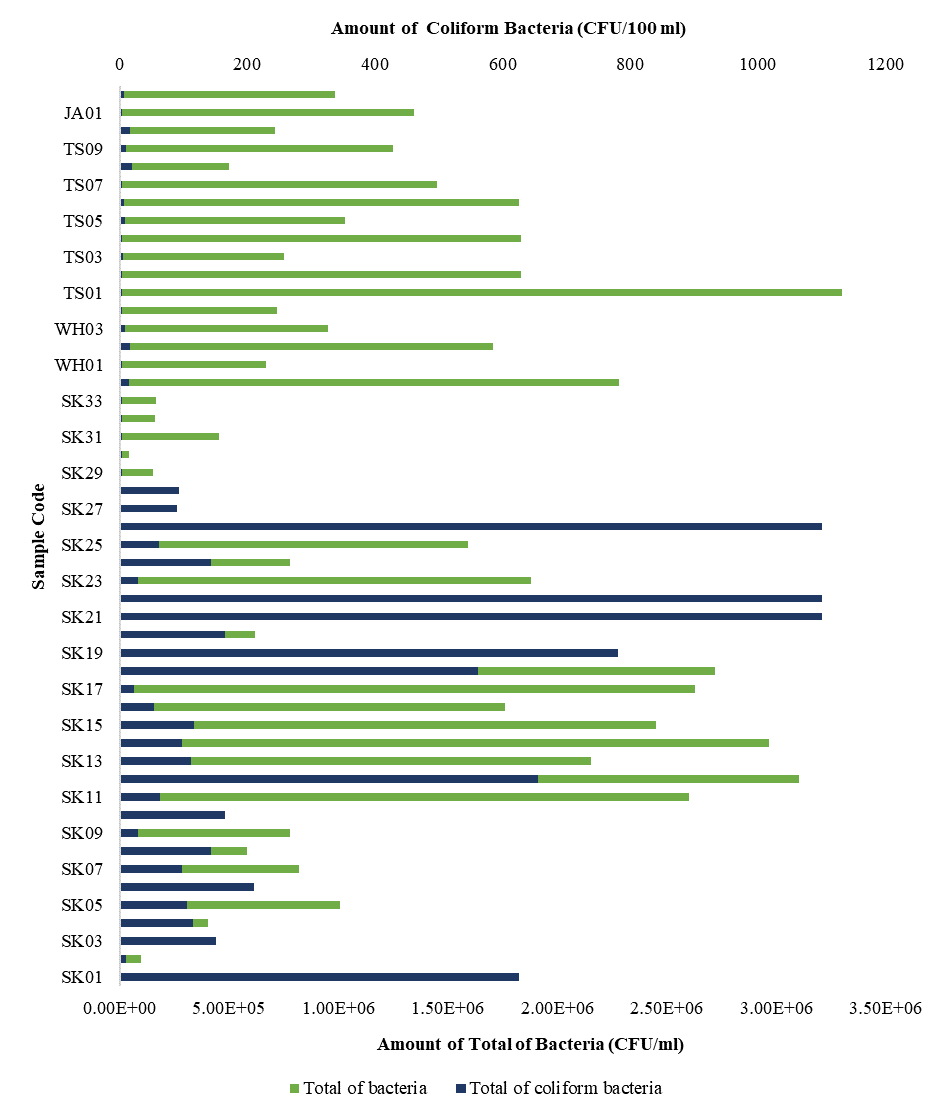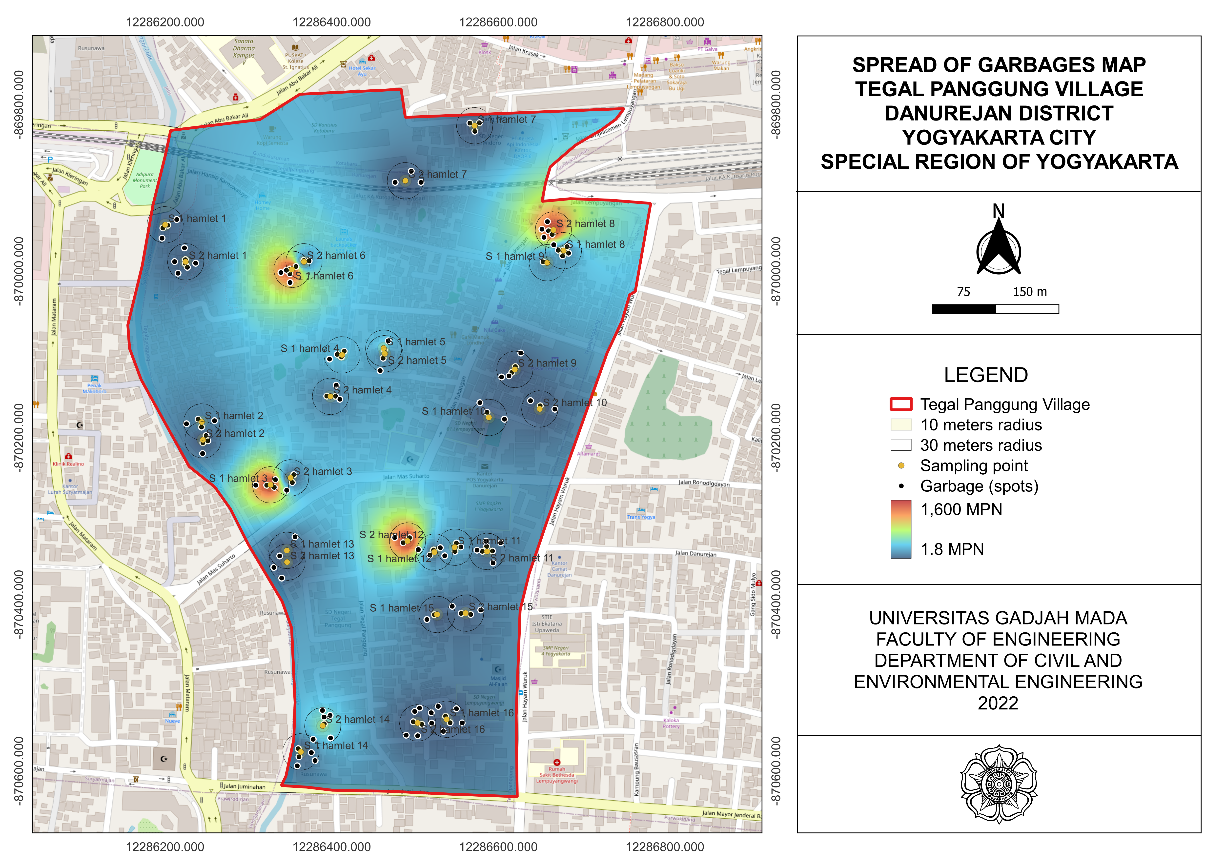Personal Hygiene as Scabies Factors Incidence in the Institute Rehabilitation Center of the Vagrants, Scrounger and Mental Disabilities in South Sumatra Region

Introduction: Scabies, caused by the mite Sarcoptes scabiei, is a highly contagious skin infestation. Poor personal hygiene often contributes to its prevalence. This study aims to identify specific aspects of personal hygiene that influence the incidence of scabies among residents of the Institute Rehabilitation Center of The Vagrants, Scroungers, and Individuals with Mental Disabilities in the South Sumatra Region. Methods: This observational-analytic study employed a case-control design. Data collection involved clinical records, observations, and questionnaire-based interviews. A total of 160 occupants, comprising 80 cases and 80 controls, were selected through simple random sampling. Data analysis utilized chi-square test and multiple logistic regression tests. Results and Discussion: Chi-square analysis revealed significant associations (p-value = 0.000) between scabies incidence and bathing habits, cleanliness of mattresses and bed linen, cleanliness of clothing, and open defecation behavior. Multiple logistic regression indicated that open defecation behavior (OR = 56.336; 95% CI = 17.281 – 158.500) was the primary personal hygiene factor influencing scabies incidence. Thus, maintaining proper open defecation practices is crucial for residents' hygiene and health. Conclusion: Poor personal hygiene practices, including inadequate bathing habits, unclean bedding, dirty clothing, and open defecation behavior, contribute to the occurrence of scabies. Effective education and counseling by healthcare professionals are essential for promoting better hygiene practices among residents.
Amare HH, Lindtjorn B. Risk Factors for Scabies, Tungiasis, and Tinea Infections among School Children in Southern Ethiopia: A Cross-Sectional Bayesian Multilevel Model. Plos Neglect Trop. 6(1):1–22. https://doi.org/10.1371%2Fjournal.pntd.0009816
Murray RL, Crane JS. Scabies. Florida: StatPearls Publishing; 2023. https://www.ncbi.nlm.nih.gov/books/NBK544306/
Chandler DJ, Fuller LC. A Review of Scabies: An Infestation More than Skin Deep. Dermatology. 2019;235(1):79–90. https://doi/org/10.1159/000495290
Moroni B, Rossi L, Bernigaud X. Zoonotic Episodes of Scabies: A Global Overview. Pathogens MDPI. 2022;11(2):213–2162. https://doi.org/10.3390%2Fpathogens11020213
Niode NJ, Adji A, Gazpers S. Crusted Scabies, a Neglected Tropical Disease: Case Series and Literature Review. Infection Disease Reports. 2022;14(1):479–91. https://doi.org/10.3390/idr14030051
Palaniappan V, Gopinath H, Kaliaperumal K. Crusted Scabies. ASTMH. 2021;104(3):787–788. https://doi.org/10.4269/ajtmh.20-1334
Richards RN. Scabies: Diagnostic and Therapeutic Update. Journal of Cutaneous Medicine and Surgery. 2020;25(1):1–8. https://doi.org/10.1177/1203475420960446
Engelman D, Cantey PT, Marks M, Solomon AW. The Public Health Control of Scabies: Priorities for Research and Action. The Lancet. 2019;394(10192):81–92. https://doi.org/10.1016/S0140-6736(19)31136-5
World Health Organization. Scabies. Geneva: World Health Organization; 2020. https://www.who.int/health-topics/scabies#tab=tab_1
World Health Organization. Scabies. Geneva: World Health Organization; 2023. https://www.who.int/news-room/fact-sheets/detail/scabies
El-Moamly AA. Scabies as a Part of the World Health Organization Roadmap for Neglected Tropical Diseases 2021-2030: What We Know and What We Need to Do for Global Control. Tropical Medicine and Health. 2021;49(64):2–11. https://doi.org/10.1186/s41182-021-00348-6
Tsoi SK, Lake SJ, Thean LJ, Mathews A. Estimation of Scabies Prevalence Using Simplified Criteria and Mapping Procedure in Three Pacific and Southeast Asian Countries. BMC Public Health. 2021;21(2060):1–10. https://doi.org/10.1186/s12889-021-12039-2
Trasia RF. Pemilihan Skabisida dalam Pengobatan Skabies. Journal of Pharmaceutical and Sciences. 2020;3(2):58–63. http://dx.doi.org/10.36490/journal-jps.com.v3i2.41
Hayun Z, Fermanda Fitri Wulandari. Hubungan Personal Hygiene Dengan Kejadian Demam Tyhpoid di Rumah Sakit Bhayangkara Palembang 2019. Jurnal Kesehatan : Jurnal Multi Ilmiah Sciences. 2021;3(2):72–80. https://doi.org/10.52395/jkjims.v11i01.325
Social Rehabilitation Institutions of Sumatera Selatan. Data Kejadian Penyakit Skabies di Panti Sosial Rehabilitasi Gelandangan, Pengemis dan Orang Dengan Gangguan Jiwa Provinsi Sumatera Selatan. Palembang: Social Rehabilitation Institutions of Sumatera Selatan;2022.
Kesumawardani G, Pawenang ET. Kesadaran Berperilaku Hidup Bersih dan Sehat dengan Kejadian Skabies pada Warga Binaan di Rutan. Indonesian Journal of Public Health and Nutrition. 2022;2(3):311–318. https://doi.org/10.15294/ijphn.v2i1.51760
Gumilang R, Farakhin N. Hubungan Personal Hygiene dengan Kejadian Penyakit Skabies pada Santri di Pondok Pesantren Al-Hikam Bangkalan. JSK. 2021;6(2):80–84. https://doi.org/10.24198/jsk.v6i2.48527
Social Rehabilitation Institutions of Sumatera Selatan. Data Kondisi Lingkungan PSR-GPODGJ 2022. Palembang: Social Rehabilitation Institutions of Sumatera Selatan.
Andrade C. Research Design: Case-Control Studies. Indian Journal of Psychological Medicine. 2022;44(3):307–309. https://doi.org/10.1177/02537176221090104
Theresiana Y, Nurjanah NAL, Wulandari. Hubungan Antara Perilaku Hidup Bersih dan Sehat (PHBS) Serta Lingkungan Sehat Dengan Kejadian Scabies di Kabupaten Banyuasin. JNPH. 2023;11(2):554–564. https://jurnal.unived.ac.id/index.php/jnph/article/download/5222/3801/
Tuharea SF, Wakano A, Rumakey RS. Hubungan Personal Hygiene dengan Kejadian Skabies pada Masyarakat Pesisir di Apui RT 06 Kelurahan Ampera Kecamatan Kota Masohi. Jurnal Keperawatan Indonesia Timur. 2021;1(1):22–31. https://www.jurnalpoltekkesmaluku.com/index.php/JKIT/article/view/234/69
Hamzah B, Akbar H. Analisis Hubungan Personal Hygiene Dengan Kejadian Skabies di Wilayah Kerja Puskesmas Juntinyuat Kabupaten. Uwigama Jurnal Kesehatan Masyarakat. 2020;6(1):22–29. https://journal.uwgm.ac.id/index.php/KESMAS
Misganaw B, Nigatu SG, Kibret AA. Prevalence and Determinants of Scabies Among School-Age Children in Central Armachiho District, Northwest, Ethiopia. PLOS ONE. 2022;10(1):1–14. https://doi.org/10.1371/journal.pone.0269918
Sauerbrei W, Perprouglou A, Schmid M, Becher H. State of the Art in Selection of Variables and Functional forms in Multivariable Analysis”Outstanding Issues. Diagnostic and Prognostic Research. 2020;4(3):1–18. https://doi.org/10.1186/s41512-020-00074-3
Mentaya E, Noraida, Khair A. Penyakit Skabies Berhubungan dengan Personal Hygiene Masyarakat. Jurnal Kesehatan Lingkungan. 2020;17(1):1–4. https://doi.org/10/31964/jkl.v17i1.172
Suryati I, Primal D, Sari PA. Hubungan Pengetahuan dan Kebersihan Diri dengan Risiko Kejadian Skabies di Panti Asuhan. PREPOTIF Jurnal Kesehatan Masyarakat. 2022;6(3):2484–2490. https://doi.org/10.31004/prepotif.v6i3.8373
Ariningtyas, Nuraini D. Analisis Karakteristik dan Higiene Individu dengan Kejadian Skabies di Lembaga Pembinaan Khusus Anak (LPKA) Kelas I Blitar. Jurnal Keperawatan Muhammadiyah. 2019;1(2):225-231. http://journal.um-surabaya.ac.id/index/php/JKM
Hamzah B, Akbar H. Analisis Hubungan Personal Hygiene dengan Kejadian Skabies di Wilayah Kerja Puskesmas Juntinyuat Kabupaten Indramayu. Jurnal Kesmas Uwigama . 2020;6(1):24–29. https://doi.org/10.24903/kujkm.v6i1.854
Gultom TB, Indarwati S. Pengaruh Personal Hygiene dan Sanitasi Lingkungan terhadap Penyakit Scabies pada Warga Binaan Pemasyarakatan (WBP) di Rumah Tahanan (RUTAN) Kelas I Bandar Lampung Propinsi Lampung Tahun 2020. Jurnal Dunia Kesmas. 2022;11(2):303–314. https://doi.org/10.33024/jdk.v11i2.6858
Triana W, Razi F. Faktor yang Berhubungan dengan Perilaku Pencegahan Penyakit Scabies pada Santri di Pondok Pesantren Nurul Iman Ulu Gedong Kota Jambi Tahun 2019. JAMHESIC. 2020;3(1):93–97. https://online-journal.unja.ac.id/kedokteran/article/download/12898/11015/35234
Maharani R, Sukendra DM. Personal Hygiene Sebagai Prediktor Penyakit Skabies pada Santri di Kelurahan Kalibeber, Mojotengah, Wonosobo. Jurnal Kesehatan Masyarakat. 2023;11(1):12–20. https://doi.org/10.14710/jkm.v11i1.36956
Hayana, Vermita WS, Sarwandi J. Hubungan Personal Hygiene Narapidana Laki-laki dengan Kejadian Penyakit Dermatitis di Lembaga Pemasyarakatan (LAPAS) Kelas II A Pekanbaru. Avicenna. 2021;16(3):141-148. https://doi.org/10.36085/avicenna.v16i3.2176
Firmansyah IR. Analisis Personal Hygiene dan Kondisi Sanitasi Narapidana pada Lapas Klas IIB Cianjut. Jurnal Kesehatan Masyarakat. 2020;6(1):64-69. http://dx.doi.org/10.35329/jkesmas.v6i1
Rahmawati AN, Hestiningsih R, Wuryanto MA, Martini. Hubungan Personal Hygiene dengan Kejadian Skabies pada Santri Pondok Pesantren X Semarang. Jurnal Ilmiah Mahasiswa. 2021;11(1):21–24. https://ejournal.undip.ac.id/index.php/jim/article/view/35019
Mauliddah SR, Nurhardiyanti S, Hamdan. Hubungan Lingkungan Fisik, Tingkat Pengetahuan dan Personal Hygiene Warga Binaan Pemasyarakatan Terhadap Skabies di Rumah Tahanan Kelas I Cirebon Tahun 2023. Journal of Health Research Science. 2023;3(02):215–226. https://doi.org/10.34305/JHRS.V3I02.967
Carolyne RN, Lubis NL, Nurmaini. Relationship between Knowledge, Clothing Cleanliness, Towel Cleanliness and Environmental Sanitation with Scabies Incidents at the Pekanbaru City Child Special Development Institute (LPKA) in 2019. BIRCI-Journal. 2021;4(1):122–130. https://doi.org/10.33258/birci.v4i1.1542
Djata IMR, Setyobudy A, Hinga IAT. Gambaran Sanitasi Lingkungan dan Hygiene Perseorangan dengan Kejadian Penyakit Kulit di Lapas Anak Kota Kupang. SEHATMAS. 2022;1(4):486–496. https://doi.org/10.55213/sehatmas.v1i4.842
Hidayat UA, Hidayat AAS, Bahtiar Y. Hubungan Tingkat Pengetahuan tentang Scabies dengan Kejadian Penyakit Scabies pada Santri Manbaul Ulum. Jurnal Keperawatan Galuh. 2022;4(2):33–38. http://dx.doi.org/10.25157/jkg.v4i2.7817
Alhidayati, Syukaisih, Amalia R, Sukma I. Faktor yang Berhubungan dengan Penyakit Skabies pada Siswa Asrama di SMKN Pertanian terpadu Provinsi Riau. Avicenna. 2020;15(2):74–157. https://dx.doi.org/10.36085/avicenna.v15i2.796
Nigusie A, Gizaw Z, Gebrehiwot M, Destaw B. Vector-Borne Diseases and Associated Factors in The Rural Communities of Northwest Ethiopia: A Community-Based Cross-Sectional Study. Environ Health Insights. 2021;15(1):1–8. https://doi.org/10.1177/11786302211043049
Mika A, Reynolds SL, Pickering D. Complement Inhibitors from Scabies Mites Promote Streptococcal Growth - A Novel Mechanisn in Infected Epidermis. Plos Neglect Trop. 2018;6(7):1563–1570. https://doi.org/10.1371%2Fjournal.pntd.0001563
Sunderkotter C, Wohlrab J, Hamm H. Scabies: Epidemiology, Diagnosis, and Treatment. Continuing Medical Education. 118(1):695–704. https://doi.org/10.3238/arztebl.m2021.0296
Zara N. Knowledge and Behavior Aspect Related to Scabies Incidence in Syamtalira Bayu Health Center, Northern Aceh Regency. NASET Journal. 2022;2(1):53–56. https://doi.org/10.37275/nasetjournal.v2i1.13
Centers for Disease Control and Prevention. Parasites - Scabies. United States: Centers for Disease Control and Prevention; 2010. https://www.cdc.gov/parasites/scabies/disease.html

This work is licensed under a Creative Commons Attribution-NonCommercial-ShareAlike 4.0 International License.
1. Copyright of all journal manuscripts is held by the Jurnal Kesehatan Lingkungan.2. Formal legal provisions to access digital articles of electronic journal are subject to the provision of the Creative Commons Attribution-ShareAlike license (CC BY-NC-SA), which means that Jurnal Kesehatan Lingkungan is rightful to keep, transfer media/format, manage in the form of databases, maintain, and publish articles.
3. Published manuscripts both printed and electronic are open access for educational, research, and library purposes. Additionally, the editorial board is not responsible for any violations of copyright law.
JKESLING by UNAIR is licensed under a Creative Commons Attribution-ShareAlike 4.0 International License.







































